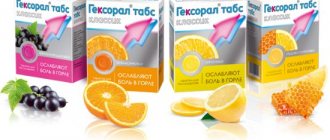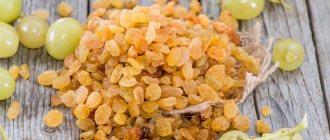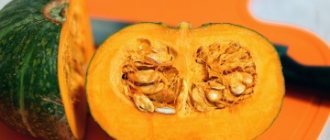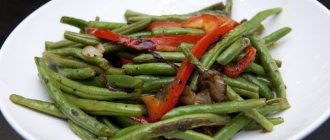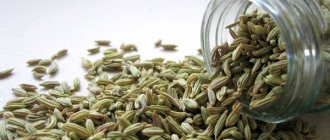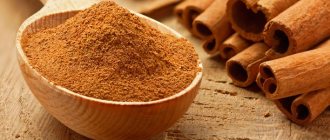Is it possible to eat broccoli during breastfeeding?
Safe foods allowed during breastfeeding include broccoli . By eating dishes made from this vegetable, women do not have to worry about the health of the child.
Compound
This cabbage contains a lot of useful vitamins and microelements . In addition, the vegetable is considered dietary due to its low calorie content (34 kcal per 100 g).
All data are given per 100 g.
BJU:
- fats – 0.37;
- proteins – 2.82;
- carbohydrates – 6.64;
- water – 89.3;
- ash – 0.87.
Vitamins:
- vitamin A – 31 mcg;
- alpha-carotene – 25 mcg;
- beta-carotene – 361 mcg;
- vitamin E – 0.8 mg;
- vitamin C – 89.2 mg;
- vitamin K – 101.6 mcg;
- vitamin B4 – 18.7 mg;
- vitamin B9 – 63 mcg.
Broccoli contains much more vitamin C than any citrus fruit . The daily requirement for ascorbic acid in an adult is met by consuming just 100 g of broccoli.
Minerals:
- potassium – 316 mg;
- sodium – 33 mg;
- phosphorus – 66 mg;
- magnesium – 21 mg;
- calcium – 47 mg;
- selenium – 2.5 mcg.
Beneficial features
Regular consumption of cabbage makes a person healthier. The beneficial properties of the vegetable include assistance in the following processes :
- removal of excess salts from the body;
- beneficial effects on the functioning of the heart and nervous system;
- support healthy nail and hair growth;
- reducing the risk of strokes and heart attacks;
- preventing the accumulation of cholesterol in the body;
- normalization of insulin levels;
- normalization of stomach function.
Contraindications
Those with high stomach acidity should not eat raw broccoli . It is also better to do without this vegetable for people who are prohibited from foods with coarse fiber.
Sometimes rare cases of individual intolerance to cabbage occur, in which case it is excluded from the diet.
Interesting things on the site:
Is it possible to eat stewed cabbage while breastfeeding?
Is it possible to eat onions while breastfeeding?
Is it possible to eat celery while breastfeeding?
Marine
This cabbage has nothing to do with vegetables. This is kelp seaweed, which is eaten and has many beneficial properties. At the same time, the introduction of algae into the menu does not cause allergic reactions. So doctors recommend that nursing mothers include seaweed in their diet, which replenishes the female body with the necessary amino acids and microelements.
Use kelp in raw or dried form. Limit your intake of canned or pickled foods to small portions, as such foods contain harmful acids. Eat seaweed in the first half of the day immediately after feeding your baby. If the baby’s condition has not changed, then continue taking kelp.
Do not overload on seaweed, as it contains a considerable amount of iodine. An excess of this substance can harm the body of the mother and child.
Benefits and harms for the mother
Eating broccoli helps strengthen the immune system and improve the health of a nursing woman. In the first difficult months of life with a baby, a green vegetable will be most appropriate, as it helps fight stress.
Tryptophan contained in broccoli is involved in the production of serotonin, called the “happiness hormone”.
In addition, the low calorie content of cabbage (35 kcal per 100 g) boiled or stewed helps a woman quickly return to her previous figure . However, you should not try raw broccoli to avoid stomach problems. It is also not recommended to eat cabbage fried, otherwise harmful carcinogens released during the heating of the oil will get into the food.
Important. After a caesarean section, you should not eat broccoli in the first weeks. All organs of the intestinal tract after surgery are in a relaxed state. Eating cabbage will cause gas to accumulate and slow down the movement of food.
In addition, while breastfeeding, women should not try broccoli broth , since the liquid contains substances harmful to the baby - guanine and adenine.
For a child
Despite the fact that broccoli is considered a safe product, sometimes consuming it at the beginning of complementary feeding can cause flatulence and bloating in a six-month-old baby. In this case, cabbage is excluded from the diet and returned to it after a month.
How to choose?
When choosing this vegetable, preference should be given to fresh rather than frozen products, since not all vitamins are preserved in their original form, and storage conditions may not be ideal.
Signs of quality broccoli :
- rich dark green color;
- dense head of cabbage;
- closed buds;
- absence of dark spots and mold;
- fresh smell;
It is better not to take yellowed vegetables. They are overripe. High-quality inflorescences should be stored in the refrigerator for no more than 3 days, wrapped in cling film or damp paper towels.
Rules for use during lactation
When breastfeeding, almost everything that the mother eats will end up in the milk in an adapted form . In order not to harm the baby, it is better to refrain from eating cabbage in the first month. Otherwise, this can lead to increased flatulence and colic in the child.
How and when to introduce it into the diet
A woman can include broccoli in her home menu a month after the birth of her baby . It is recommended to eat the vegetable boiled, steamed or in the oven. You should not eat cabbage raw, so as not to provoke colic in the baby.
What time of day and how much is there?
In the first month, breastfeeding women are advised to start with a few spoons of broccoli soup . It is important to monitor the condition of the baby throughout the day.
If there are no adverse reactions and mother’s milk is still well absorbed, you can increase the amount of cabbage to 100 g per day, but no more, so as not to provoke an upset stomach in the baby. When the baby turns two months old, the mother is allowed to eat a two-hundred-gram portion.
What to combine with
Cabbage can be eaten with sour cream, vegetable oil or other vegetables . Also add it to fish or meat, prepare soups, salads and casseroles from broccoli.
Colored
Unlike white cabbage, cauliflower contains practically no coarse fiber. So, when consuming this product during lactation, you don’t have to worry that your baby will have problems with the digestive system. At the same time, the vegetable has a number of beneficial properties.
Therefore, the use of this product is not only permitted, but also recommended.
Beneficial features
The absence of a high concentration of coarse fiber and the fine cellular structure have a beneficial effect on the child’s digestive tract. Cauliflower also boasts a high content of vitamins and beneficial microelements that are necessary for the mother’s depleted body.
Possible harm
If, after introducing cauliflower into the diet, a child experiences intestinal problems, then consumption of the vegetable should be suspended in order to observe the baby.
Introduction to diet
Cauliflower can be introduced into the diet much earlier than white cabbage. However, the vegetable must be subjected to heat treatment. Nutritionists advise nursing mothers to boil or steam cauliflower. When cooking, use a small amount of salt and mild spices that will not harm the child.
Is it possible to give cabbage to a child?
WHO recommends introducing broccoli into complementary foods for infants from seven months , and for bottle-fed babies from five months. The new product is offered to children in the form of purees, prepared independently or purchased in a store. For starters, half a teaspoon is enough.
After introducing a new vegetable, monitor your child’s reaction to complementary foods. If there are no changes, double the portion and bring it to 50 g by the end of the week. If the baby has colic or a swollen belly, remove cabbage from the diet for a while.
Brussels
Thanks to its composition, Brussels sprouts are easily digested by a child’s unprepared digestive system. Therefore, mother can safely use this product while breastfeeding. This variety of cabbage does not cause allergic reactions.
Well, the vitamins, folic acid and beneficial microelements that make up Brussels sprouts have a beneficial effect on a woman’s body during lactation.
You can slowly introduce this vegetable into the menu 2 weeks after the start of breastfeeding. This variety of cabbage is consumed stewed, boiled and steamed. Servings of Brussels sprouts increase gradually.
Broccoli recipes for nursing mothers
After purchasing, it is better to immediately cook the cabbage or divide it into inflorescences and freeze . It is recommended to store prepared food in the refrigerator for no more than two days. Breastfeeding women should opt for stewed, baked and boiled dishes.
Cream of broccoli soup
This soup is recommended not only for nursing mothers, but also for babies under one year old . The taste of the dish can be varied by adding croutons, cream, other vegetables or spices.
Products:
- broccoli – 150 g;
- carrots – 1 pc.;
- rice – 1 tbsp. l.;
- onion – 40 g;
- water – 0.5 l;
- salt to taste.
Wash and peel the vegetables. Cut the onion into rings, finely chop the carrots and throw into the hot broth.
Then add rice and salt. Cook for 15 minutes on medium power until the rice is done. Separate the broccoli into florets and add to the pan. Cook for another ten minutes, then grind the finished soup in a blender.
Broccoli omelette in the oven
An omelette with broccoli will diversify your usual breakfast . Can be cooked either in the oven or in a covered frying pan. Let's consider the first option.
Products:
- eggs – 2 pcs.;
- broccoli – 4-5 inflorescences;
- sour cream – 2 tbsp. l.;
- flour – 2 tsp;
- salt to taste.
Boil cabbage inflorescences in salted water. Using a blender, mix eggs, sour cream and salt. Add flour and stir until lumps disappear. Grease a baking dish with oil, place cabbage on the bottom and fill with liquid mixture. Cook the dish for 20 minutes at 190°C.
Reference. During cooking, broccoli quickly loses its beneficial qualities. Therefore, start cooking the washed vegetable immediately. Cook cabbage in boiling water for no more than seven minutes.
Chicken roll with broccoli
The dish has an unusual taste thanks to the successful combination of broccoli and cheese . You can bake not only in the oven, but also in a slow cooker in the “Baking” mode.
Products:
- chicken fillet – 300 g;
- cottage cheese – 150 g;
- broccoli – 150 g;
- hard cheese – 100 g;
- onion – 50 g;
- eggs – 2 pcs.
Using a blender or meat grinder, grind the chicken fillet. Then mix with eggs, cottage cheese, onion and salt. Place part of the resulting mass in a greased mold and make a depression.
Divide the cabbage into florets, cut and place on the minced chicken. Sprinkle with grated cheese and cover the filling with the remaining mixture, creating a roll or zraza shape.
The dish is prepared for half an hour at a temperature of 220°C.
How to cook broccoli properly
It is better to cook broccoli immediately after purchase, as it quickly spoils and loses its beneficial properties. You can store the product for two to three days in the refrigerator, after wrapping the inflorescences in wet paper towels. Do not store vegetables in a container or bag, as air circulation is necessary!
Wash the product immediately before cooking. It is better to cook broccoli for no more than five to seven minutes in boiling water. This will maximize the benefits of the product. If you are making soup, add the vegetable five minutes before cooking. It is better to eat the finished dish right away. If necessary, cooked cabbage can be stored in the refrigerator in a tightly closed container for no more than three days.
Broccoli goes well with other vegetables, sour cream or vegetable oil. Cabbage is placed in salads and soup, used as an appetizer, a separate dish and a side dish for meat or fish.
You should not cook broccoli in the microwave, as cabbage loses more of its essential elements and becomes useless. We offer recipes for dishes with broccoli that will diversify the diet of a nursing mother.
“Dangerous” foods when breastfeeding
Cabbage, onions, garlic, broccoli, Brussels sprouts, cauliflower, peppers, cucumber and turnips can cause increased gas in the intestines and nervousness, which usually lasts up to 24 hours and then goes away. Eliminate these foods from the diet for at least the first 3 months of breastfeeding, until your baby's digestive tract is more developed.
Dairy products (milk, cheese, yogurt and even butter) in a mother's diet can cause an allergic reaction in the child. Symptoms may appear within minutes to hours after breastfeeding and may include diarrhea, rash, gas, stuffy nose or cough. The mother should eliminate all dairy products from her diet for two weeks to see if the baby improves.
Citrus fruits (orange, lemon, lime, grapefruit and tangerine) are allergens. Signs of intolerance to these foods: nervousness, vomiting, diarrhea, rash, hives. Eliminate citrus fruits from your diet for about a week. Then reintroduce one food item after another into the diet to identify the culprit.
Chocolate contains a substance called theobromine, which irritates the stomach. Signs of intolerance include nervousness and diarrhea. Eliminate that food item from your diet for a week. This period is enough to see whether the child's condition improves.
Eggs, wheat, grains, fish, peanuts, nuts and soy are allergens. Signs of intolerance in a child may include nervousness, vomiting, diarrhea, rash, and hives. Proteins from these foods may pass into milk during breastfeeding. Keep track of what and when you ate. Eliminate suspect foods from your diet for about a week. Then reintroduce one food after another.
Special benefits of sauerkraut
No heat treatment is used to prepare sauerkraut, so it retains most of the beneficial properties of the raw product and gets a little more, including:
- Vitamin K (in significant quantities). Allows you to normalize blood clotting and reduce the likelihood of coronary heart disease.
- Isiothicyanates. Helps prevent cancer.
- Probiotics, prebiotics, vitamin C. All three components help maintain, restore and strengthen the immune system (to ensure the necessary effect, the mother only needs to eat one tablespoon of the product per day).
- Antibacterial and organic components. They help prevent the development of putrefaction processes in the gastrointestinal tract and normalize the intestinal microflora.
- Cellulose. Thanks to this component, appetite improves and the digestion process stabilizes.
Also, consuming brine helps improve the health of your gums and teeth. But all this is necessary mainly for the mother.
What is the danger of the product?
Unfortunately, there are no ideal products in nature.
And this type of cabbage is no exception. If the mother ate a large amount of broccoli, the child may have an allergic reaction. You also need to remember about the risk of provoking slight gas formation. Therefore, you should be careful and start with small portions
Broccoli can aggravate existing pancreatic disease in a nursing mother. Increased stomach acidity is also a contraindication for the use of this product.
During the period of natural feeding, it is necessary to take into account possible harm to the health of the mother and baby. Abuse of broccoli is dangerous for varicose veins, migraines, blood viscosity, chronic gastrointestinal diseases
It is allowed with caution in case of increased acidity of gastric juice. A raw vegetable can cause flatulence and indigestion, so during lactation it is used only after heat treatment.
On a note! Broccoli broth is dangerous when breastfeeding, because when boiled, harmful substances that can harm the baby pass into the liquid.
Mom often faces the question of the quality of the product. Basically, you can buy asparagus cabbage in two versions: fresh or frozen
When choosing fresh broccoli, you need to pay attention to its appearance. Cabbage inflorescences should be rich green (sometimes a slight purple tint is possible), the stem should be strong and juicy
If the vegetable is limp and has begun to turn yellow, you should not take it - it is either stale or overripe.
When choosing a vegetable for a nursing mother’s table in the store, give preference to fresh products rather than frozen ones. The inflorescences should be dark green or purple. If they turn yellow, this indicates that the cabbage is overripe.
Broccoli is stored in the refrigerator. To extend shelf life, it can be tightly covered with cling film. The vegetable also lends itself well to freezing at home and can be stored in the freezer for up to six months.
Before introducing the product into your diet, in any case, consult with your pediatrician whether broccoli can be consumed by a nursing mother during this particular period. Perhaps the doctor will see risk factors and suggest holding off. In general, the main contraindication to the use of this type of cabbage is only individual intolerance.

